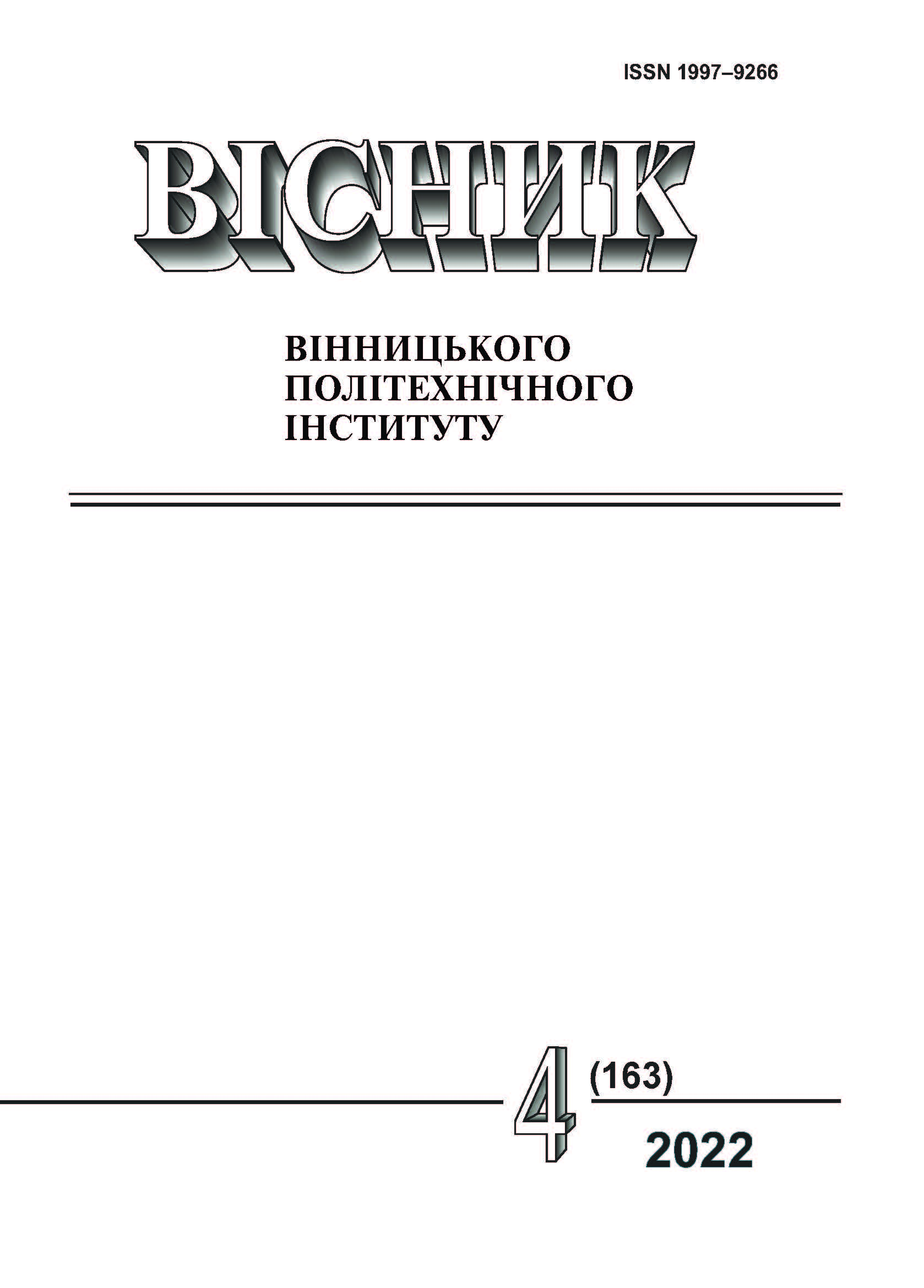Features of Neural Network Classifier Models for Object Recognition
DOI:
https://doi.org/10.31649/1997-9266-2022-163-4-56-63Keywords:
neural network classifier, ranking, competition mechanism, discriminant functionAbstract
In decision support subsystems for object recognition, the detection of the most probable result among those possible for a given set of features is of particular importance. For this purpose, it is appropriate to assign specific ranks to each of the resulting signals in the classification process. In this article, two models of the neural network classifier are considered, and the result of classification in the improved model is the formation of ranks for all defined classes using a new approach. So, the functionality of such a neural network classifier, in this case, was expanded due to the ranking of classes. The advanced neural network classifier has five layers — input, three hidden ones, and output layers. In the first hidden layer, the corresponding discriminant functions are formed, in the second hidden layer, the WTA competition mechanism is implemented (the winner takes all). The output layer, in which the object class ranks are formed, is built on counters in which the class ranks are gradually calculated. The third hidden layer acts as a masking layer, participating in the formation of ranks. Therefore, the introduction of two layers - masking and output in the form of counters — allows to determine the ranks of the input object in relation to its belonging to specific classes. The article presents the general structures of the considered neural network classifiers, shows the topological structures of both models of such classifiers for comparison, and also considers the functional scheme of the elements of the added layers. Features of the functioning of the proposed classifier are presented, and its structural and functional characteristics are presented in the form of a table. In addition, the peculiarities of the implementation process of the neuron competition mechanism in the competitive layer of the classifier are schematically shown.
References
Rangaraj M. Rangayyan, Biomedical Signal Analysis. Second ed. Wiley-IEEE Press, 2015. [Електронний ресурс]. Режим доступу: https://ieeexplore.ieee.org/book/5264168 .
И. Е. Шепелев, и Б. М. Владимирский, «Построение нейросетевого классификатора для интерфейса “мозг–компьютер”,» Нейрокомпьютеры: разработка, применение, № 9, 2010.
Т. Б. Мартынюк, А. Г. Буда, В. В. Хомюк, А. В. Кожемяко, и Л. М. Куперштейн, «Классификатор биомедицинских сигналов,» Искусственный интеллект, № 3, с. 88-95, 2010.
С. Осовский, Нейронные сети для обработки информации, пер. с польск. М., РФ: Финансы и статистика, 2004.
T. Martyniuk, B. Krukivskyi, L. Kupershtein, and V. Lukichov, “Neural Network model of heteroassociative memory for the classification task,” Radioelectronic and Computer Systems, № 2 (102), pp. 108-117, 2022. https://doi.org/10.32620/reks.2022.2.09
Э. М. Куссуль, Л. М. Косаткина, и В. В. Лукович, «Нейросетевые классификаторы для распознавания рукописных символов,» Управляющие системы и машины, № 4, с. 77-86, 1999.
В. И. Юнкеров, и С. Е. Григорьев, Математико-статистическая обработка данных медицинских исследований. СПб.: ВМедА, 2002.
В. В. Москаленко, М. О. Зарецький, Я. Ю. Ковальський, і С. С. Мартиненко, «Модель і метод навчання класифікатора контекстів спостереження на зображеннях відеоінспекції стічних труб,» Радіоелектронні і комп’ютерні системи, № 3, с. 59-66, 2020. https://doi.org/10.32620/reks.2020.3.06 .
Г. М. Гнатієнко, і В. Є. Снитюк, Експертні технології прийняття рішень, моногр. Київ, Україна: ТОВ «Маклаут», 2008.
В. П. Карп, «Интеллектуальный анализ данных в проблеме построения решающих правил классификации (на примере медицинской диагностики),» Новости искусственного интеллекта, № 2, с. 57-75, 2006.
Р. Сэджвик, Фундаментальные алгоритмы на С++. Анализ структуры данных. Сортировка. Поиск, пер. с англ. СПб. РФ: ООО «ДиаСофтЮП», 2002.
К. Кохонен, Ассоциативные запоминающие устройства, пер. с англ. М., РФ: Мир, 1982.
Г. Лорин, Сортировка и системы сортировки, пер. с англ. М.: Мир, 1983.
Т. Б. Мартинюк, і Б. І. Круківський, «Модель паралельного сортувальника для асоціативного процесора,» Вісник Вінницького політехнічного інституту, № 5, с. 49-55, 2020. https://doi.org/10.31649/1997-9266-2020-152-5-49-55 .
Т. Б. Мартинюк, і Б. І. Круківський, «Асоціативний процесор,» Патент України G06F 7/06. № 139604 МПК, 2006, 10.01.2020.
У. Прэтт, Цифровая обработка изображений, пер. с англ. М.: Мир, 1982.
Т. Б. Мартинюк, і Я. В. Запетрук, «Нейромережевий підхід до медичної експрес-діагностики,» Вісник Вінницького політехнічного інституту, № 6, с. 37-44, 2019. https://doi.org/10.31649/1997-9266-2019-147-6-37-44 .
Т. Б. Мартинюк, М. Г. Тарновський, і Я. В. Запетрук, «Структурні особливості нейромережевого класифікатора,» Вісник Вінницького політехнічного інституту, № 1, с. 46-52, 2020. https://doi.org/10.31649/1997-9266-2020-148-1-46-52 .
Т. Б. Мартинюк, Б. І. Круківський, і О. А. М’якішев, «Класифікатор,» Патент України G06G 7/00. № 150621 МПК (2022), 10.02.2022.
Т. Б. Мартинюк, і Б. І. Круківський, «Особливості паралельного алгоритму сортування з формуванням рангів,» Кібернетика та системний аналіз, № 1 (58), с. 31-36, 2022.
Т. Мартынюк, Л. Куперштейн, и А. Кожемяко, Аспекты разностно-срезовой обработки данных в нейроструктурах, моногр. LAMBERT Academic Publishing RU, 2018.
Downloads
-
PDF (Українська)
Downloads: 80
Published
How to Cite
Issue
Section
License

This work is licensed under a Creative Commons Attribution 4.0 International License.
Authors who publish with this journal agree to the following terms:
- Authors retain copyright and grant the journal right of first publication.
- Authors are able to enter into separate, additional contractual arrangements for the non-exclusive distribution of the journal's published version of the work (e.g., post it to an institutional repository or publish it in a book), with an acknowledgment of its initial publication in this journal.
- Authors are permitted and encouraged to post their work online (e.g., in institutional repositories or on their website) prior to and during the submission process, as it can lead to productive exchanges, as well as earlier and greater citation of published work (See The Effect of Open Access).





